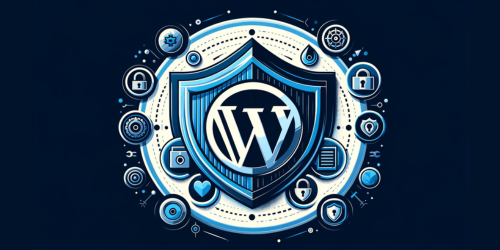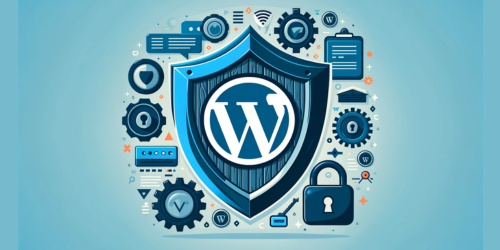When we talk about installing WordPress, many envision a straightforward click-and-install process. And while that’s often the case, the traditional methods involve a bit more hands-on approach.
Picture manually setting up databases, tweaking file permissions, and navigating server settings. Sounds intricate, right? For the tech-savvy, it’s a walk in the park. But for the non-technical user, it can feel like deciphering an ancient script. It’s this very complexity that underscores the need for a clear, step-by-step guide like this one!
1. Pre-requisites
First, a rudimentary understanding of domains, databases, and FTP is invaluable.
Secondly, not all hosting is created equal. Opting for a reliable hosting environment isn’t just a good-to-have; it’s pivotal. A robust host ensures your site remains accessible, loads swiftly, and stays secure from potential threats. Remember, the foundation you lay now determines the stability of your digital empire.
2. Setting Up the Environment
Imagine constructing a skyscraper. Before the first brick is laid, the ground beneath must be prepared. Similarly, before WordPress graces your screen, the digital groundwork needs attention.
Enter the LAMP stack: a quartet of software that forms the backbone of many WordPress installations.
- Linux: The operating system that acts as the bedrock.
- Apache: The server software that broadcasts your website to the world.
- MySQL: The database system where all your precious content resides.
- PHP: The scripting language that brings dynamic flair to your site.
Configuring Linux is akin to setting the stage. It’s about ensuring compatibility, optimizing performance, and paving the way for the other components. But as you lay this groundwork, never underestimate the importance of security.
3. Database Configuration for WordPress
Behind every dynamic WordPress site lies a structured database. Crafting a dedicated database for WordPress is paramount, ensuring organized storage and seamless retrieval of data. But it’s not just about creation; it’s about control.
Setting up user permissions is like handing out keys to a vault. You decide who gets access and to what extent. While it’s tempting to grant broad access for simplicity, restraint is crucial. Tailored permissions minimize risks, ensuring only authorized actions occur.
And as with all things digital, security isn’t optional. Implementing robust security measures, from strong passwords to regular backups, transforms your database from a mere storage unit to a fortified digital stronghold. Make WordPress Database Security a essential need.
4. Installing WordPress
Downloading the Essentials
Start by fetching the latest WordPress package from the official repository. This ensures you’re equipped with the most recent features and security updates.
The Heartbeat – wp-config.php
Once downloaded, you’ll encounter a file named wp-config-sample.php. Think of it as the heart of your WordPress site. Rename it to wp-config.php and pop it open. Here, you’ll input database details, authentication keys, and other pivotal settings. It’s like tuning a piano; get this right, and your site will sing harmoniously.
Installation
With the essentials in place, navigate to your website URL. You’ll be greeted by the WordPress installation screen.
Follow the prompts, select a username (hint: avoid “admin” for security reasons), choose a robust password, and voilà! Your WordPress site springs to life, ready to dazzle the digital realm.
5. Advanced Tips
First and foremost, regular updates are non-negotiable. They’re the lifeblood that keeps your site secure, efficient, and in sync with the latest web standards.
For those seeking a streamlined approach, Bitnami offers a one-click installation experience, eliminating the intricacies of manual setups.
But the journey doesn’t end there. The vast ecosystem of tools and plugins available for WordPress can supercharge your site, offering enhanced performance, security, and aesthetics. Tread wisely, choose judiciously, and watch your WordPress site soar.
6. Common Errors and How to Avoid Them
A misstep during installation, like database connection errors or file permission issues, can halt progress. Being proactive, double-checking configurations, and referencing official documentation can steer you clear of these pitfalls.
Regularly monitoring site speed, optimizing images, and pruning unnecessary plugins ensures your site remains agile and user-friendly, standing tall amidst the digital crowd. WordPress Optimization Guide can help you in optimization.
7. Manual Installation vs. One-Click Installers
Manual installations offer unparalleled control, allowing customization at every turn, from database tweaks to file structures. It’s the artisanal approach, tailored for those craving flexibility.
On the flip side, one-click installers, like those offered by Softaculous, promise convenience. With a single click, Softaculous One-Click Installer ,your site is live. But this ease can come at a cost, often limiting advanced configurations. In essence, it’s a trade-off: control versus convenience. Choose wisely.
8. Additional Resources
- WordPress Installed on Linux Ubuntu: This guide offers step-by-step instructions tailored for Ubuntu users.
- WordPress Installed on Linux Mac: Ideal for those transitioning from traditional macOS environments to Linux-based ones.
- WordPress Installed on Linux Command Line: Learn how to navigate and locate WordPress installations using command-line tools.
- WordPress Installed on Linux CentOS: Delve into the world of CentOS and discover how WordPress installations are managed on this robust Linux distribution.



